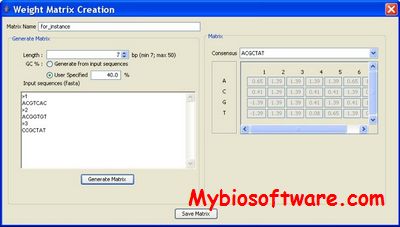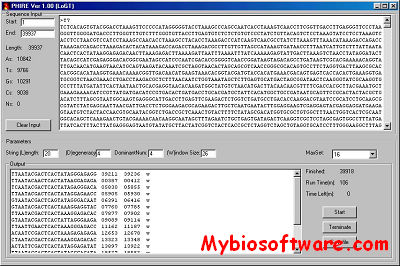Predector 1.2.3.0
:: DESCRIPTION
PreDetector (Prokaryotic Regulatory Elements Detector) is a tool designed for biologists. Its main function is to search for the cis-elements (nucleotides) that regulate the genes for a bacteria specie, assuming that one usually consider that a cis sequence regulates a gene iff it is oriented in the same direction and if it is localised in a user-specified interval regarding to the beginning of the gene. To achieve its function, PreDetector connects to the NCBI server, which provides the information on the genes for a given bacteria. When a cis sequence is considerated as regulating a gene, PreDetector also computes the co-transcribed genes, that is the genes that are located in another user-specified interval regarding to the end of the preceding gene (and this is a recursive process). On user demand, PreDetector also allows to generate statistics containing the percentage of genic and intergenic sequences
::DEVELOPER
:: SCREENSHOTS
:: REQUIREMENTS
- Linux / MacOsX / Windows
- Java
:: DOWNLOAD
:: MORE INFORMATION
Citation
Hiard S, Maree R, Colson S, Hoskisson PA, Titgemeyer F, van Wezel GP, Joris B, Wehenkel L, Rigali S. (2007).
PREDetector: A new tool to identify regulatory elements in bacterial genomes.
Biochem Biophys Res Commun. 357(4):861-4.


